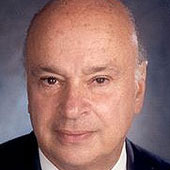Global Wallflower?
How much has Latin America changed over the last decades?
May 18, 2004
Few people remember that in the 1960s and 1970s, Latin America was the fastest-growing region in the world, outpacing even the Asian countries.
As a result of the attention showered on the region by President John F. Kennedy's Alliance for Progress and the contrasting turmoil in Asia during the Vietnam War, the Americas were the darling of the investment community.
In the 1970s, Latin America was awash with money. The resulting debt — partially caused by the major banks' extravagant and irresponsible lending policies — far exceeded the region's capacity to repay it. This made the region one of the world's highest borrowers in relation to its tax base.
This unsustainable scenario quickly collapsed and immersed the region in one of the most severe depressions in its history.
Pundits were concerned that these hard-pressed people would soon react, follow the calls of Fidel Castro — and explode in social chaos and revolution. But they did not. To the contrary, the painful lessons the region learned became the crucible for a new Latin America.
More recent history demonstrates the pace at which changes are occurring in the region. Ten years ago, widespread depression ruled Latin America following the intractable debt crisis.
Both perspective and potential throughout Latin America and the Caribbean were affected by the debt crisis and economic depression of the 1980s.
The seemingly slow pace of economic growth in the last two decades has greatly changed social, political and economic forces — in the degree of urbanization, in civil society and in attitudes. The global economy has also created a broad array of new forces.
During the last few years, the people of the Americas have tried to sustain their democracies and adjust their economies to cope with a global economy in which they were minor players — and in which the prices for their primary products were beyond their control.
The measures taken in the 1990s show what enlightened, realistic policies, external support of the reformers and hope can accomplish. Open markets, economic deregulation and increasing foreign and internal investment have led to economic integration.
The reduction of tariff barriers from an average of more than 80% to 10%-15% in 2003 has helped form an aggressive, increasingly confident private sector.
While these trends have come under pressure in the early 2000s, the impact of the underlying reforms remains strong.
The recent movement of some countries to follow Panama and use the dollar as their legal tender could change the entire region.
Ecuador adopted the dollar as a bulwark against economic indiscipline. In El Salvador, within a few months after the move to dollarization, interest rates fell from 17% to 11%.
Interest rates on credit cards declined from 34% to 18% and arid mortgages were extended to 30 years — all unprecedented for the region.
There is another, darker, side of the picture, however. The cold data of economic growth mask the widespread poverty throughout the Americas.
Large sectors of the population profiting from the global economy are growing richer, while the poor fall further behind.
Income distribution in the Americas — already among the most unequal in the world — has become further skewed in a global economy in which education is paramount.
Social inequality, poor income distribution and low-quality education are the principal impediments today to consolidating democracy and economic growth in the region.
Many other problems crowd the agenda for the Americas. The institutions that form democracy and define its responsiveness to its people are weak. Civil service is rudimentary leaving much room for mischief and corruption.
Credit institutions for small and medium enterprises are scarce. And weak judicial systems undermine citizens' confidence in fairness and discourage commercial transactions.
The recession in the United States in 2001 and the failure of the economic reforms to attract investment have spread dismay and disillusionment. This stands in stark contrast to the determination and promise of the region throughout the 1990s.
Alongside that disappointment, though, is a new generation of Latin Americans and Caribbeans who have a more pragmatic view of these issues.
They also are aware of their governments' shortcomings and are more impatient about their ability to correct them. The region has greatly changed in the last decade and — for the most part — for the better.
Read previous
Meet India’s Sonia Gandhi
May 17, 2004
